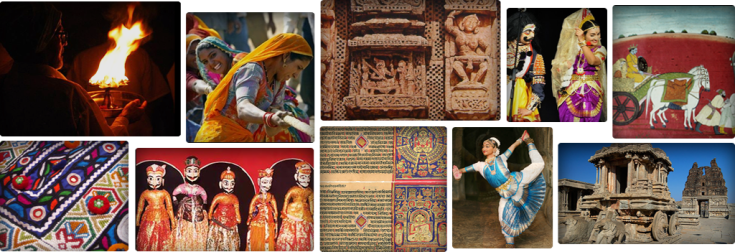Indian Economy: Critical Milestones during 70 years
V.SRINIVAS
India’s economic history over the past 70 years has been marked by several critical milestones amongst which are the crisis years of 1966, 1981 and 1991 and India’s emergence from the economic crisis as the fastest growing major economy of the world.
India’s balance of payments position was under pressure throughout 1965. As the year 1966 opened, exchange reserves had already been reduced to a low level. In March 1966, a stand-by arrangement of US$ 200 million was approved by the IMF. Rupee was devalued by 36.5 percent to bring domestic prices in line with external prices, to enhance the competitiveness of exports. The US dollar which was equivalent to Rs. 4.75 now rose to Rs. 7.50 and the pound sterling from Rs. 13.33 to Rs. 21. The Government declared a plan holiday. The fourth five-year plan was abandoned in favor of three annual plans in the wake of disruptions in the economy on account of two years of drought, two wars, and the devaluation of the rupee. The annual plans guided development with immediate focus on stimulating exports and searching for efficient uses of industrial assets. The devaluation failed; it did not achieve its objectives. The promised foreign aid did not materialize.
The balance of payments situation changed dramatically in 1979-80. Inflation soared from 3 percent in 1978-79 to 22 percent in 1979-80. The external terms of trade worsened significantly owing to higher prices for imported petroleum and fertilizers. Trade deficit zoomed. Government undertook deficit financing on an unprecedented scale. In 1981, to meet the short term cyclical imbalance, India drew SDR 266 million of the SDR 500 million approved under the compensatory financing facility (CFF) from the IMF. The main elements of the Government’s strategy for restoring the viability of balance of payments was an increase in the domestic production of petroleum and petroleum products, fertilizers, steel, edible oils and non-ferrous metals. India’s strategy for bringing balance of payments under control paid rich dividends. The Government voluntarily decided not to avail of the balance of 1.1 billion SDR under the Extended Fund Facility of the IMF.
The IMF programs of 1966 and 1981 helped tide over periods of high inflation and difficult balance of payments position faced at that point of time. That said, they were modestly successful in bringing economic reforms to the Indian economy. India entered the 1990s with structural rigidities and imbalances in the economy, pronounced macroeconomic imbalances despite a significant growth rate of 5 percent. Several adverse domestic and external developments precipitated in the balance of payments (BOP) crisis in 1991. From this crisis, emerged a comprehensive reform agenda backed by an IMF program which was effectively implemented.
On August 27, 1991, India approached the IMF for an 18-month stand-by arrangement in an amount equivalent to SDR 1656 million. The adjustment strategy entailed a set of immediate stabilization measures adopted in July 1991 most notably a 18.7 percent depreciation of the exchange rate and further tightening of monetary policy including increase in interest rates, designed to restore confidence and reverse short term capital outflow. A comprehensive program built around the twin pillars of fiscal consolidation and a radical structural reform to shift away from past policies was adopted. In many ways, the IMF program of 1991/92 ensured India’s integration into the global economy.
The global financial crisis which began in 2007 took a turn for the worse in September 2008 with the collapse of several international financial institutions. Indian stock markets witnessed a 60 percent loss in values, foreign portfolio investment slowed down and rupee lost 20 percent value against the dollar reaching Rs. 50/ dollar. Expectations that the Indian economy is ‘decoupled’ from the West were completely belied. A substantial fiscal stimulus was provided through two packages on December 7, 2008 and January 2, 2009. The Reserve Bank of India took a number of monetary easing and liquidity enhancing measures including the reduction in the cash reserve ratio, statutory liquidity ratio and key policy rates. The objective was to facilitate funds from the financial system to meet the needs of productive sectors.
India’s economy was one of the first in the world to recover after the global crisis. Prompt fiscal and monetary policy easing combined with a fiscal stimulus had brought growth to pre-crisis levels. Capital inflows were back on the rise and financial markets regained ground. Growth was projected to rise from 6 ¾ percent in 2009-10 to 8 percent in 2010-11. India faced challenges in managing capital flows and sterilized intervention was pursued to help reduce exchange rate volatility.
On October 8, 2016 the Indian Finance Minister addressed the International Monetary and Financial Committee (IMFC) during the Fund-Bank Annual Meetings presented India as the fastest growing major economy globally with GDP growth at 7.2 percent, foreign exchange reserves of USD 372 billion, current account deficit of (-) 1.1 percent and CPI inflation at 5.05 percent. The Government showed deep commitment to fiscal consolidation, lowering the cost of credit to private sector and help price stability. Subsidy reforms were undertaken with better targeting of subsidies by linking oil subsidies with aadhar. Government constituted an empowered monetary policy committee and fixed an inflation target of 4 percent with a tolerance level of +/- 2 percent for the period 2016-2021. The GST represents a major milestone in tax reforms. The economic transformation from an IMF program country to the world’s fastest growing major economy represents a significant success story for the Indian economy at 70.








